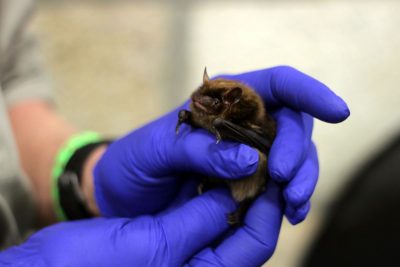
This study is the first to collect genetic sequencing data from bat rabies viruses in the Northeast
The COVID-19 pandemic and the significant impact of emerging variants have shown the importance of understanding viruses in as much detail as possible.
Luckily there are many ways scientists can learn more about zoonotic diseases, like genetic sequencing. Data gathered from detailed genetic sequencing can tell us a lot about a virus, like how it spreads and its evolutionary history.
This same lesson can be applied to another public health concern – rabies in bats.
Dong-Hun Lee, assistant professor of infectious disease epidemiology in the College of Agriculture, Health and Natural Resources recently identified the currently circulating rabies viruses in bats submitted to the Connecticut Veterinary Medical Diagnostic Laboratory (CVMDL) and shared his findings in Viruses.
This study is the first to collect genetic sequencing data from bat rabies viruses in the Northeast.